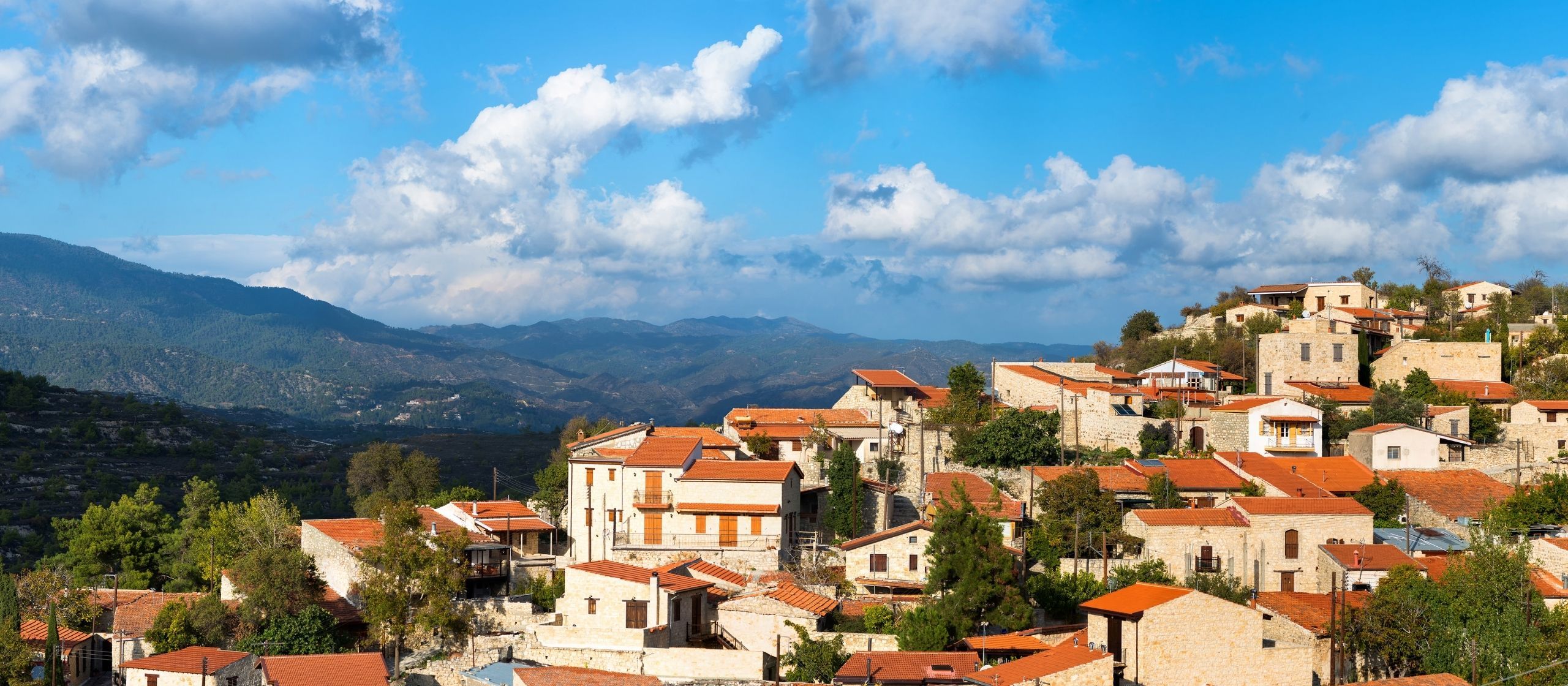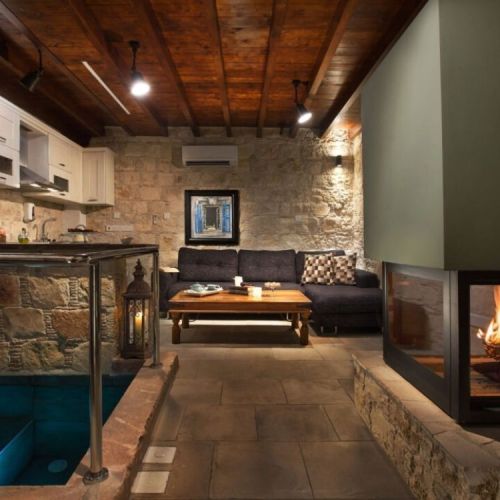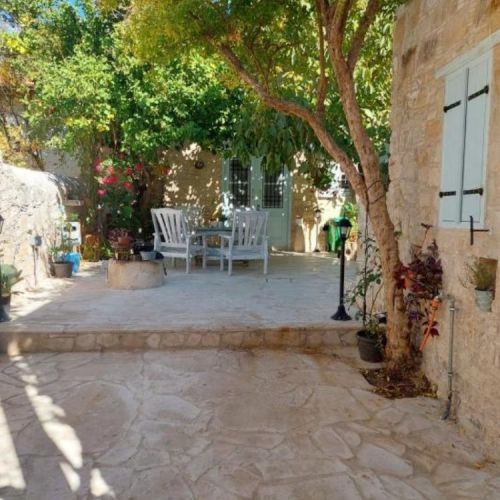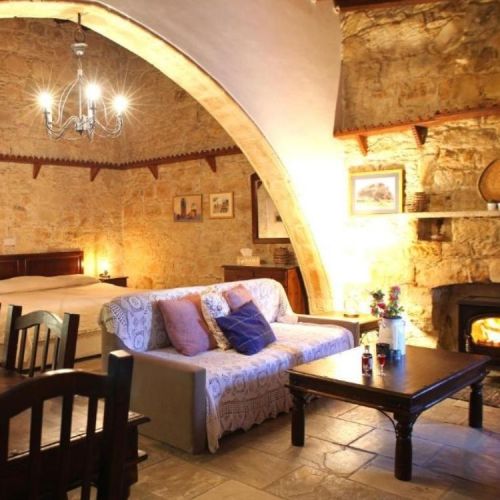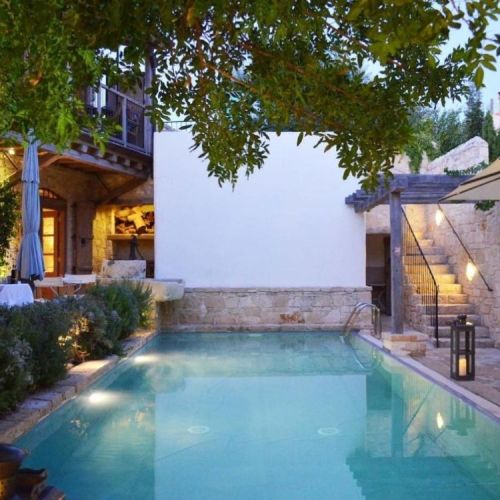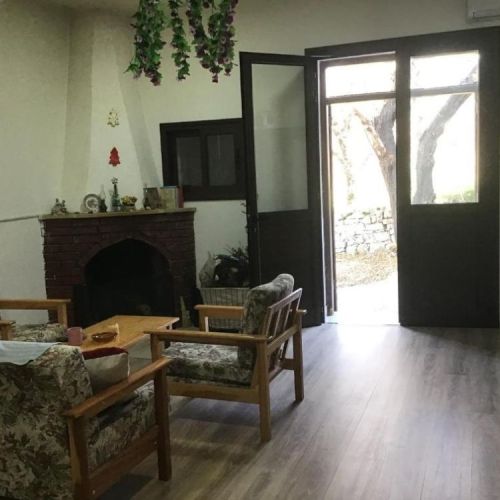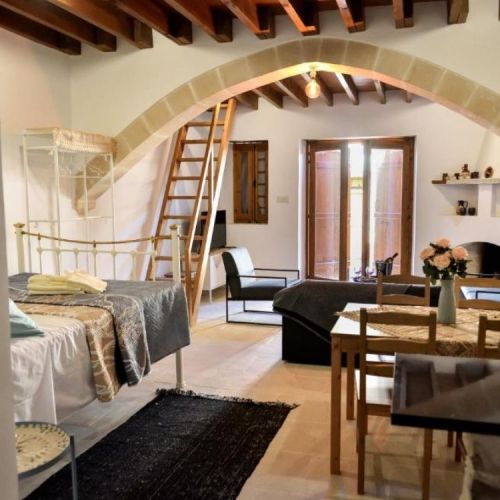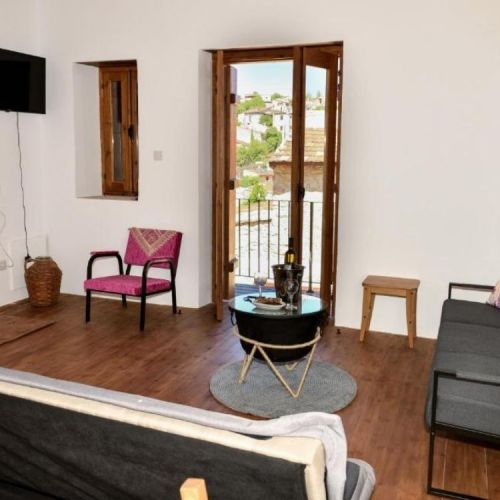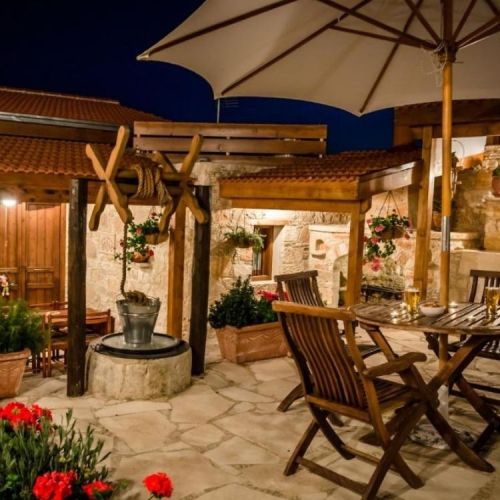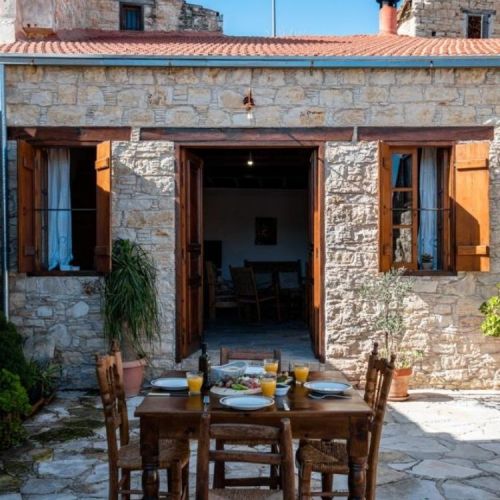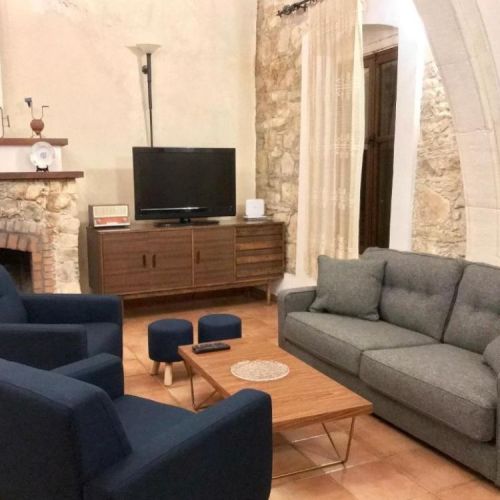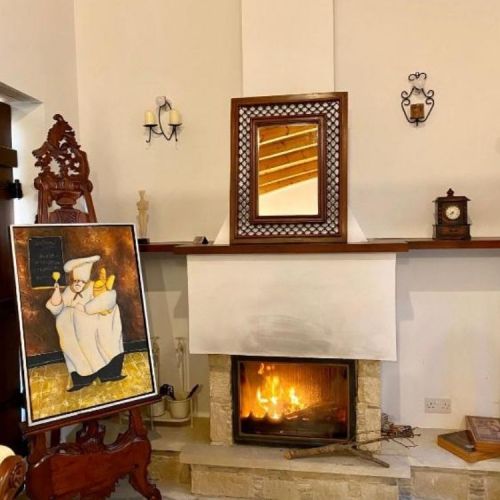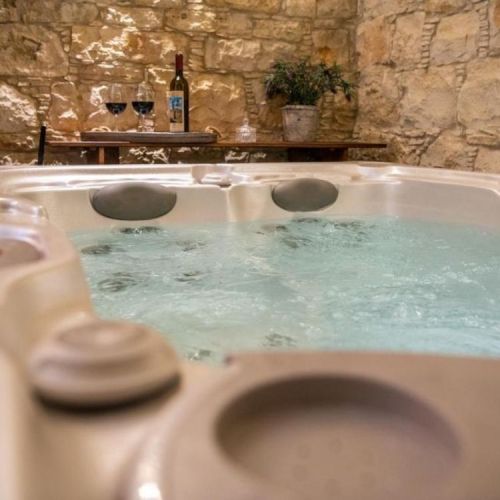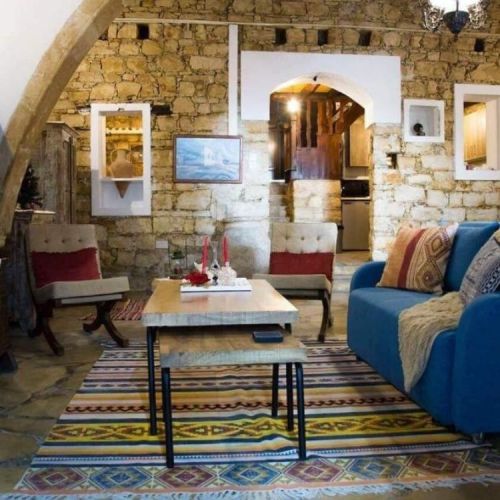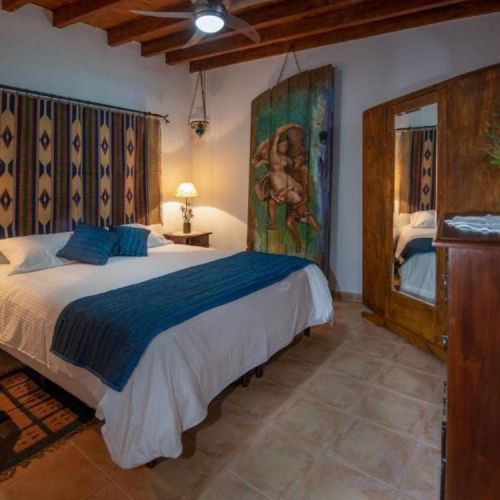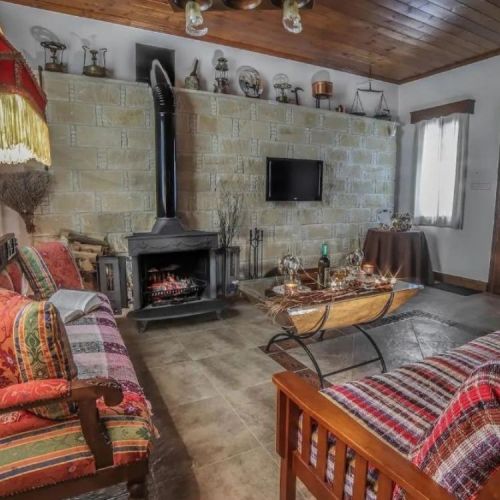The beautiful village of Lofou
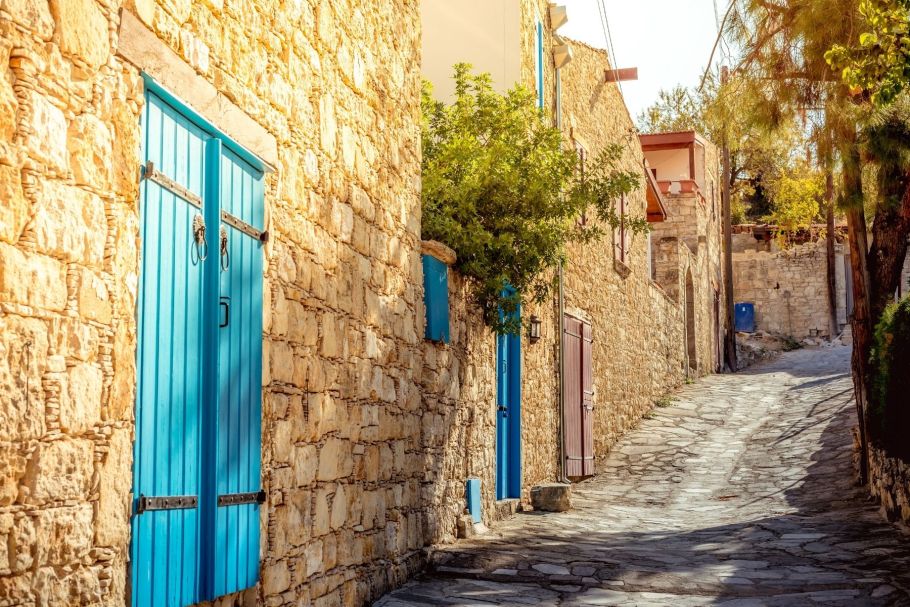
Lofou is a circular town on hills at 780 meters with an annual rainfall of 650 cm. Narrow, steep mountains surround it. Two canals of “Kryos” and “Kouris,” both from “Kouris,” split the countryside.
Lofou Village
Lofou is 26 kilometers northwest of Limassol in the “ampelochoria” between Limassol and Paphos.
Lofou is a circular town on hills at 780 meters with an annual rainfall of 650 cm. Narrow, steep mountains surround it. Two canals of “Kryos” and “Kouris,” both from “Kouris,” split the countryside.
Asphalted roads link Lofou to adjacent settlements. It is connected to “Pera Pedi” village in the north (6.5 km) and “Saint Therapon” village in the southwest (4.5 km). The southeast was connected to “Alassa” village. Flooded by “Kouris” weir, the community was rebuilt elsewhere. Lofou is connected to Sylikou, Monagri, and Doros from the east.
Limassol-to-village takes 25 minutes today. Visitors may reach the settlement in 15 minutes by driving up the main road to Platres and turning left after Alassa village.
The community is named for its hilltop location amid mountains. The Greek word “lofos”—meaning “hill”—inspired Lofou. The village was once called “Lofos” in the early 20th century. Simos Menandros (1970) suggests that the village’s renaming from “Lofos” to “Lofou” was due to a change in local farmers’ vernacular. Morphological changes made “Lofou” feminine. The village is commonly known as “Lofou.” No historical evidence exists to determine when “Lofou” was founded. The Bronze Age must have occupied the area. The village’s old pots can confirm this.
The majority believe the settlement was formed before the Franks seized Cyprus in the late 12th century. The Arab attacks led the people to flee to the island’s interior. Since the community was concealed in the mountains, it provided protection and was perfect for their purposes.
The settlement was first mentioned in writing in Frankish Cyprus. In a medieval handwritten document by Leontios Machairas, King Jacob I (1382-1398) of Cyprus gave Lofou and other villages to his brother Janot de Luzinian, Lord of Beirut. Lofou was listed as a king of Cyprus hamlet in a late 15th-century Venetian handwritten writing provided by Mas Latri (1861). Mas Latri calls the village “Lofou”.
Historical records show that shepherds from “Finika” herded their flocks as far as the village’s current position. They slept in a nearby cave. Lofou’s original residences were farms in the valley. Shepherds built “stiathkia” shelters and later stone buildings with wood and mud or clay roofs (Porakos, 2004).
The village was known as “Lofos” during Ottoman administration (Papadopoulos, 1965). T. Papadopoulos (1965, p. 208) said that Lofou had only Greek Cypriots in 1832. Mas Latri further notes that the 1862 census showed the community had more than 200 people. In 1855, an organized primary school began, and the Lofou church was built during the end of Ottoman rule.
British domination turned Lofou into a massive vineyard. Vine planting transformed the village. The vines blooming on the well-built and maintained terraces was breathtaking. Locals grew wheat and locust trees.
Lofou and Cyprus suffered an economic and political disaster in the following decade. Farmers’ lives became very difficult, even intolerable, during this time. Since they couldn’t borrow money, residents sold their homes at unrealistically low prices. Political tensions increased in Lofou and Cyprus. Cyprus failed to unite with Greece. The British Government declined their request, disappointing the public and inflaming politics.
It is widely believed that Lofou residents created Ypsonas, one of Limassol district’s main settlements, in the 19th century. This assumption is false. Ypsonas was settled in medieval times and inhabited by Lofou circa 1770. Ypsonas had few residents until the early 1900s. Lofou farmers began moving permanently to Ypsonas. During British rule in Cyprus, Lofou lost inhabitants to Ypsonas. After the First and Second World Wars, Ypsonas’ population soared while Lofou’s plummeted.
The Cyprus Republic’s years confirm that Ypsonas’ population increase and Lofou’s decline are final developments. 1946–1986 was a “blessing and a curse” for Lofou. “Curse” because the community was abandoned and its occupants lost their vibrancy. As a remarkable example of a typical Cypriot village in the countryside, the village remained intact during that period. We can admire magnificent historic architecture today.
The village’s spirit began with Lofou Association’s foundation in 1987. Lofou Association also wants to strengthen Lofitians’ and friends’ friendship, brotherhood, cooperation, and understanding. The village’s efforts to restore and maintain private and public structures may be most essential. The Department of Urban Planning encourages house restoration and gives financial assistance as part of a larger village rehabilitation effort. The entire historic village is in a special zone where houses must be conserved or built to strict standards. Today, the village’s restored houses with their beautiful wooden balconies, narrow cobblestone streets, neoclassical school, magnificent church, traditional olive and flour mill in the rural museum, taps and cisterns, and many other small beautiful details attract visitors and each one of us. The “Palouze Festival” on the last Sunday of September, the remembrance of Lofou’s hero “Ioannis Stavrianos,” and the Virgin Mary’s feast on March 25 draw large crowds to the village. Finally, the village’s two historic taverns, the newly built hotel, and other old buildings may offer visitors typical Cypriot hospitality.
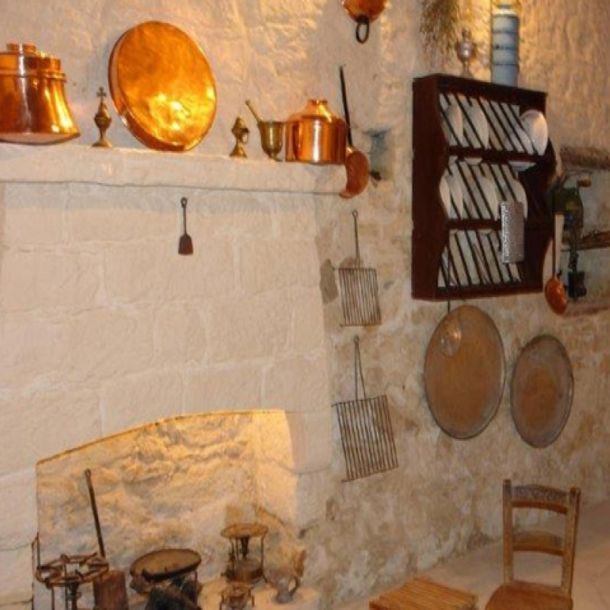
Folk Art Museum
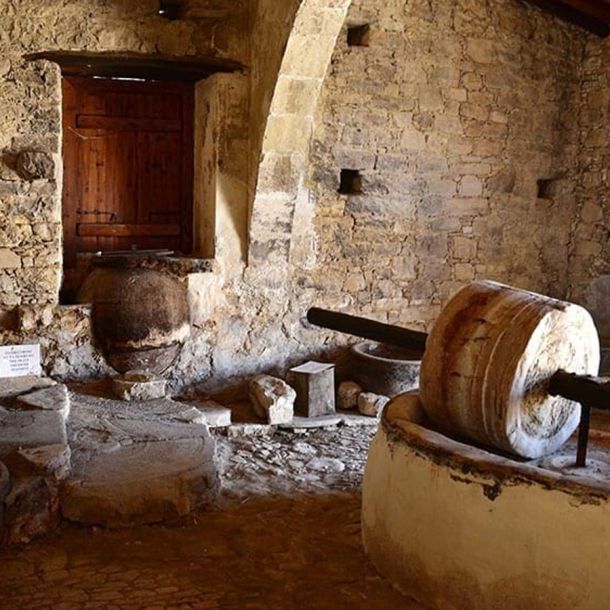
Olive press Museum
Folk Art Museum
The Folkloric Museum in Lofou is a private collection of Mr. Petros, a Cypriot who loves his country, culture and tradition.
Folk Art Museum
The Folkloric Museum in Lofou is a private collection of Mr. Petros, a Cypriot who loves his country, culture and tradition. All these items, were collected with much patience and obstinacy. A small but interesting at the same time museum, that you should visit.
Olive press Museum
The Olive Oil Press is located northeast of the church of the village and at a distance of approximately 300 metres. It was manufactured in Lemesos in around the end of the 19th century at “I. Kyriakides & Co Engineering workshop and Foundry”.
Olive press Museum
The Olive Oil Press is located northeast of the church of the village and at a distance of approximately 300 metres. It was manufactured in Lemesos in around the end of the 19th century at “I. Kyriakides & Co Engineering workshop and Foundry”. The word “LEMISSOS” is inscribed with upper case letters on the press.
The building is a rectangular stony construction which consists of two rooms. The first room contained all the means necessary for the production of olive-oil (e.g. the press), while the second room was used as a storage room.
Nowadays, various objects from the olive oil press are still preserved. The stony mill is of course preserved, as well as the millstone, the iron presser and some storage utensils. On the corner of the olive oil press one can admire the “niskia”, which was used to boil water. The pole which was used to push the millstone so that it could crush the olives is also salvaged today.
The olive oil press area has already been restored after efforts were made by the previous Community Council. According to the current Community Council’s short-term plan, the olive oil press will be electrified, while a long-term plan aims at placing all the utensils that were used for the production in one room and place the flourmill, another important piece of machinery from the previous century, into the second room.
Finally, it is worth mentioning that the olive oil press is still owned by the church of Lofou. The reason for that is that the church bought the olive oil press and the olive mill because it used to own a lot of olive trees. The people who took their olives there used to pay the church of Lofou either by using some of their product or in cash.

Folk Art Museum
The Folkloric Museum in Lofou is a private collection of Mr. Petros, a Cypriot who loves his country, culture and tradition.
Folk Art Museum
The Folkloric Museum in Lofou is a private collection of Mr. Petros, a Cypriot who loves his country, culture and tradition. All these items, were collected with much patience and obstinacy. A small but interesting at the same time museum, that you should visit.

Olive press Museum
The Olive Oil Press is located northeast of the church of the village and at a distance of approximately 300 metres. It was manufactured in Lemesos in around the end of the 19th century at “I. Kyriakides & Co Engineering workshop and Foundry”.
Olive press Museum
The Olive Oil Press is located northeast of the church of the village and at a distance of approximately 300 metres. It was manufactured in Lemesos in around the end of the 19th century at “I. Kyriakides & Co Engineering workshop and Foundry”. The word “LEMISSOS” is inscribed with upper case letters on the press.
The building is a rectangular stony construction which consists of two rooms. The first room contained all the means necessary for the production of olive-oil (e.g. the press), while the second room was used as a storage room.
Nowadays, various objects from the olive oil press are still preserved. The stony mill is of course preserved, as well as the millstone, the iron presser and some storage utensils. On the corner of the olive oil press one can admire the “niskia”, which was used to boil water. The pole which was used to push the millstone so that it could crush the olives is also salvaged today.
The olive oil press area has already been restored after efforts were made by the previous Community Council. According to the current Community Council’s short-term plan, the olive oil press will be electrified, while a long-term plan aims at placing all the utensils that were used for the production in one room and place the flourmill, another important piece of machinery from the previous century, into the second room.
Finally, it is worth mentioning that the olive oil press is still owned by the church of Lofou. The reason for that is that the church bought the olive oil press and the olive mill because it used to own a lot of olive trees. The people who took their olives there used to pay the church of Lofou either by using some of their product or in cash.
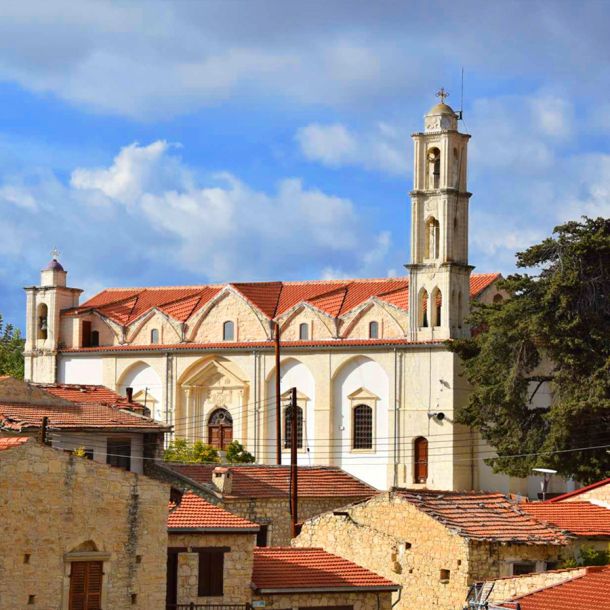
Panagia Chrysolofitissa Church
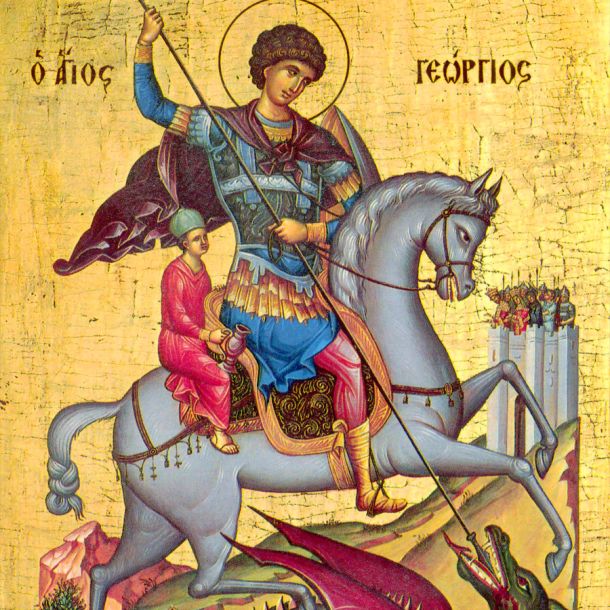
Agios Georgios Chapel
Panagia Chrysolofitissa Church
Standing on a hill west of Lofou is the main church of the village which is dedicated to the Annunciation of Virgin Mary. The church was constructed in the 19th century.
Panagia Chrysolofitissa Church
Standing on a hill west of Lofou is the main church of the village which is dedicated to the Annunciation of Virgin Mary. The church was constructed in the 19th century. More specifically, the construction of the central building of the church began in 1854 and was completed in 1872. It is a single-roomed church bearing features of gothic art and mainly on its roof. Its floor is covered with small square mosaic marbles with dimensions 20×20. The church is 30.5 metres long and 13 metres and 30 centimetres wide.
The interior of the church is adorned by exquisite hagiographies, an imposing chancel, the despotic throne, the pulpit and the wooden faldstool.
In the church there are old icons of Virgin Mary, one dated back to the 11th century which is located inside the Holy Bema and a second one which, according to Gunnis, is dated back to the 16th century.
Externally, the church is adorned by two bell towers made of stone which were completed at the beginning of the 20th century and more specifically in 1910.
Agios Georgios Chapel
The Chapel of Agios Georgios is built west of the village, near the centre of the village. It is a well preserved chapel which was renovated in the year 2000.
Agios Georgios Chapel
The Chapel of Agios Georgios is built west of the village, near the centre of the village. It is a well preserved chapel which was renovated in the year 2000. The internal part of the chapel is adorned by a large icon of Agios Georgios which was painted by the monks of Mount Athos Kyrillos and Nimfonas. Located next to the church is a large water basin, as well as a cemetery with carven stony graves. What is also worth mentioning is that some of the graves have been classified as Type B Monuments./p>

Panagia Chrysolofitissa Church
Standing on a hill west of Lofou is the main church of the village which is dedicated to the Annunciation of Virgin Mary. The church was constructed in the 19th century.
Panagia Chrysolofitissa Church
Standing on a hill west of Lofou is the main church of the village which is dedicated to the Annunciation of Virgin Mary. The church was constructed in the 19th century. More specifically, the construction of the central building of the church began in 1854 and was completed in 1872. It is a single-roomed church bearing features of gothic art and mainly on its roof. Its floor is covered with small square mosaic marbles with dimensions 20×20. The church is 30.5 metres long and 13 metres and 30 centimetres wide.
The interior of the church is adorned by exquisite hagiographies, an imposing chancel, the despotic throne, the pulpit and the wooden faldstool.
In the church there are old icons of Virgin Mary, one dated back to the 11th century which is located inside the Holy Bema and a second one which, according to Gunnis, is dated back to the 16th century.
Externally, the church is adorned by two bell towers made of stone which were completed at the beginning of the 20th century and more specifically in 1910.

Agios Georgios Chapel
The Chapel of Agios Georgios is built west of the village, near the centre of the village. It is a well preserved chapel which was renovated in the year 2000.
Agios Georgios Chapel
The Chapel of Agios Georgios is built west of the village, near the centre of the village. It is a well preserved chapel which was renovated in the year 2000. The internal part of the chapel is adorned by a large icon of Agios Georgios which was painted by the monks of Mount Athos Kyrillos and Nimfonas. Located next to the church is a large water basin, as well as a cemetery with carven stony graves. What is also worth mentioning is that some of the graves have been classified as Type B Monuments./p>
Activities
and Attractions
Cyprus’s agrotourism offers a variety of places to visit. Places, both familiar and unfamiliar, that will soothe you and provide you with utter serenity and beauty. From Lofou to other villages, one can escape and experience a lovely and easygoing atmosphere.
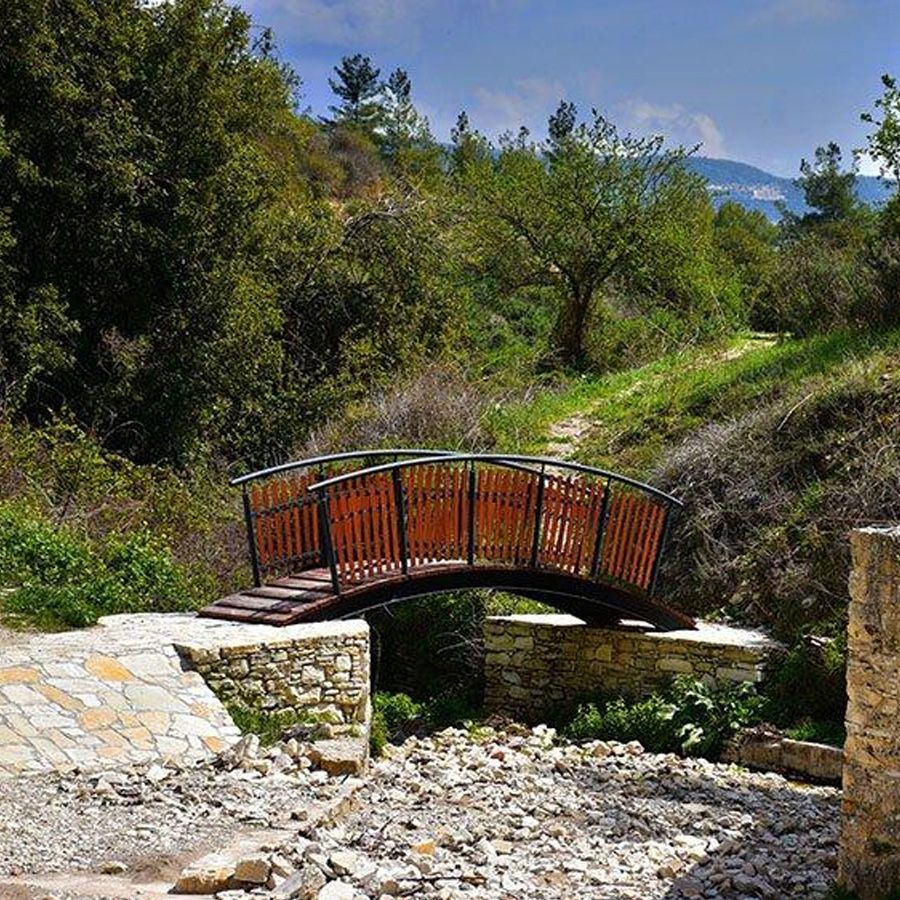
Lofou Walking Trail
Lofou Walking Trail
Lofou walking trail begins just a few meters north of the building area of Lofou towards Sylikou village. It covers a distance of about a kilometer and follows a downhill course towards the traditional faucet of Elitji, where the villagers of Lofou used to get their water in older times. On the faucet, which is at the end of the route, there is an inscription dated 1842, which proves the date that the faucet was built.
The trail is located south of a small stream which flows with water only during the winter months. This phenomenon creates a micro-system along the walking trail somewhat different to the rest of the region. Here the walker may admire various species of Cyprus flora and fauna such as tall shrubs and oaks as well as many herbs.
The walking trail has special aesthetic value for both the residents and the visitors of the village. Many of them usually take the opportunity to visit it in order to relax and escape from the daily routine.
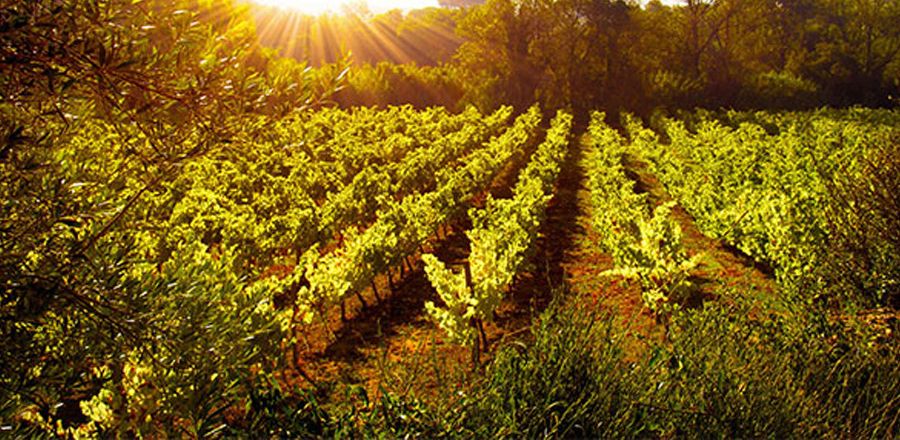
Vineyards
Vineyards
The cultivation of vineyards constituted one of the main occupations of the Cypriots from older times until today, and it was closely connevted with their life, customs and culture. Of course Lofou, one important wine village of the “ampelochoria” area of the Limassol district, could not be an exception of the rule. The soft climate and the territorial conditions were ideal for the growth of vineyards. The local wine of Lofou was famous all over Cyprus for its excellent quality. It would be remiss not to mention the amazing view of the village in the old times, when the vineyards were blossoming and the green color was prevailing in the horizon.
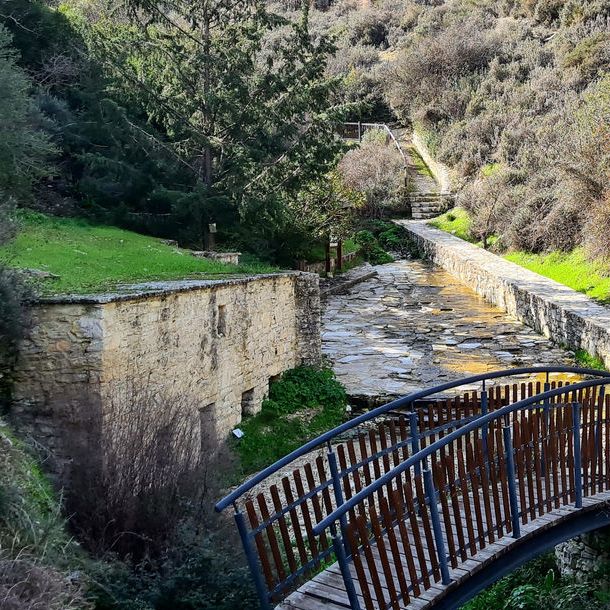
The Faucet of Elitzi
The Faucet of Elitzi
The ‘faucet of Elitji’ is located approximately one kilometre northeast of Lofou half way towarch Sylikou. The faucet owes its name to the homonymous region. The source that was supplying water the faucet is at the base of a steep mountain. The people of Lofou built a large tank of water in front of the source. The tank is decorated beautifully with big windows, from which the residents of Lofou were getting water. The whole project regarding the construction of the building was completed in 1842. The faucet served the water needs of Lofou residents until 1953, the year in which the British concreted faucets in various parts of the village.
Today visitors may go to the ‘faucet of Elitji’ either from the dirt road Lofou – Sylikou, or the walking trail that has been created recently by Lofou Community Council. It is also worth noting that Lofou Community Council has recently constructed a nice patio in front of the ‘faucet of Elitji’, so as to serve the people who visit the faucet and those who enjoy the walking trail.

Palouzes Festival
Palouzes Festival
The Community Council and the Lofou Association of expatriates organizes every year in September, the Palouze Festival in the courtyard of the elementary school.
The aim of the festival is firstly the promotion of Cypriot rural heritage and rural revitalization and other community support.
The visitors can taste Palouze for free. At the festival you can also see folk craftsmen, potters, woodcarvers, exhibiting their traditional creations. For the children there is a work corner which provides special moments and the opportunity to ride on donkeys.
Palouzes (Grape Must Dessert)
This is a classic Cypriot dessert of grape must thickened with flour.Traditionally this is made during September and October using the must (pressed grape juice) from the grape harvest.
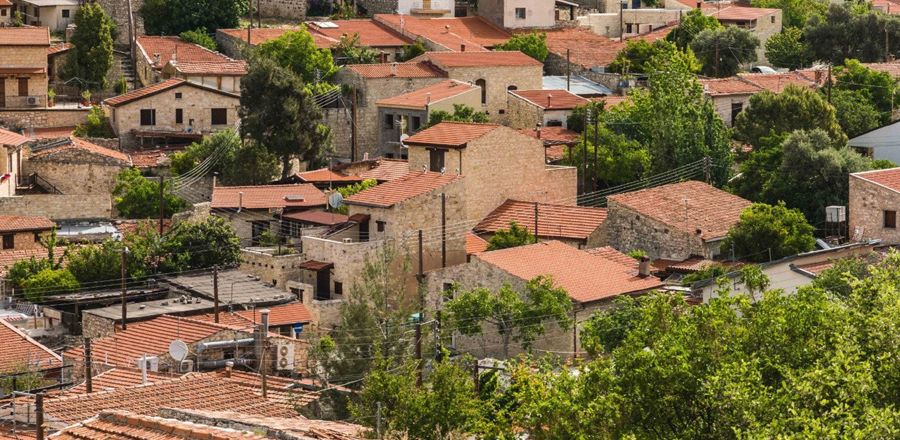
Guest House
Guest House
The Community Guesthouse is a picturesque stony building. It is the ideal accommodation for anybody who wishes to spend one or more nights in the beautiful community of Lofou and experience something unique.
The guesthouse can accommodate up to 28 guests. It can be a place of stay for groups of pupils, students, excursionists and members of non-government organisations. The guesthouse consists of six bedrooms with two or three berths. Therefore, each room can accommodate between four and six people. All bedrooms are en-suite and equipped with a heating and air-conditioning system.
The kitchen is fully equipped so that visitors can prepare breakfast, lunch and dinner. In the dining room there are rectangular tables with traditional wooden chairs. Usually, guests resort to the local taverns for lunch and dinner.
The guesthouse offers various entertainment areas, an internal yard and a specially shaped room. The first entertainment area, the internal yard, offers a patio with a traditional small oven. A lot of daily and night gatherings take place there. The second recreation area is equipped with a 46” TV, a DVD player, board games and five computers with a wireless internet connection.
Undoubtedly, Lofou and its Guesthouse can offer a great excuse for somebody to meet the Cyprus countryside, its natural beauties, its popular architecture and its folkways
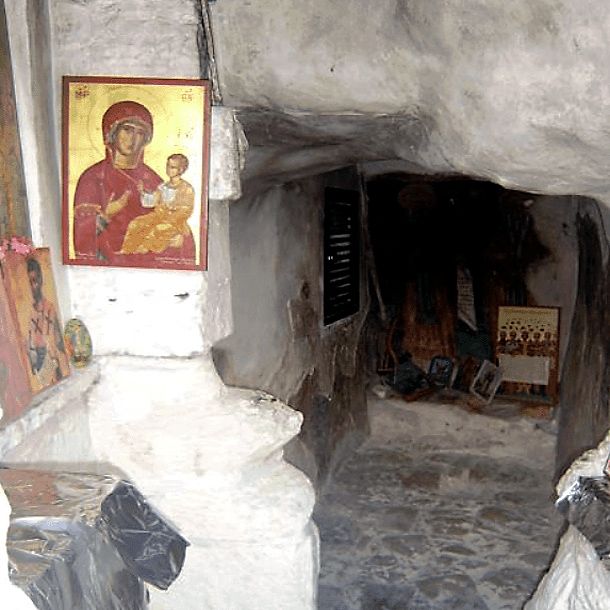
Agioi Pateres Cave
Agioi Pateres Cave
The chapel of the Holy Fathers in Lofou was built with the initiative of both the Lofou Community Council and the Lofou Ecclesiastical Committee. It is a very small building, measuring just four square meters, and is located northwest of the village, less than a kilometer from the traditional core of Lofou.
In the area where the chapel now stands, was the cave of the Holy Fathers. Pottery and human bones were found inside the cave during the construction of the chapel. In this cave existed for decades a candle, which was lit systematically by the villagers of Lofou.
Although small, the chapel of Holy Fathers is filled with icons of Saints and Fathers of the Orthodox religion. The icons were donated to the chapel by many devoted people of Lofou. The many icons in such a small space create a sense of religious devoutness to the followers. The priest performs community vespers in the chapel once a year in the eve of the feast of the Holy Fathers on the 14th of October.
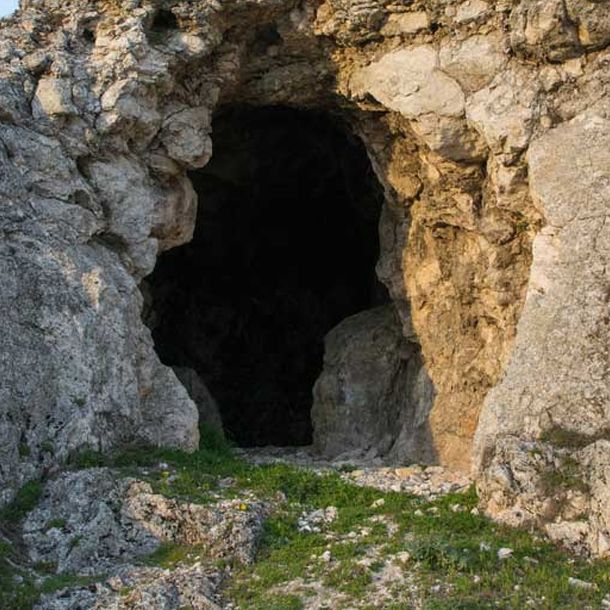
Hatjiroussos Cave
Hatjiroussos Cave
The ‘cave of Hatjiroussos’ is located in the center of the traditional core of the village at the base of a steep hill. It is an impressive perimeter cave with a depth of about 10 meters and a height of about two meters in a total area of about 60-70 square meters. The cave got its name from the homonymous family that first inhabited in its place. It is said that the Hatjiroussos family was the first to reside in the current position of the village of Lofou. This is estimated to have occurred during the Ottoman rule.
Today the cave has been preserved partly by Lofou Community Council. The maintenance work has, however, paused in order for the cave to be scientifically investigated by the Geological Survey Department of the Republic of Cyprus. At first sight, it appears that the ‘cave of Hatjiroussos’ is a monumental place that may be used in order to witness the lifestyle of the people of Lofou in older times.
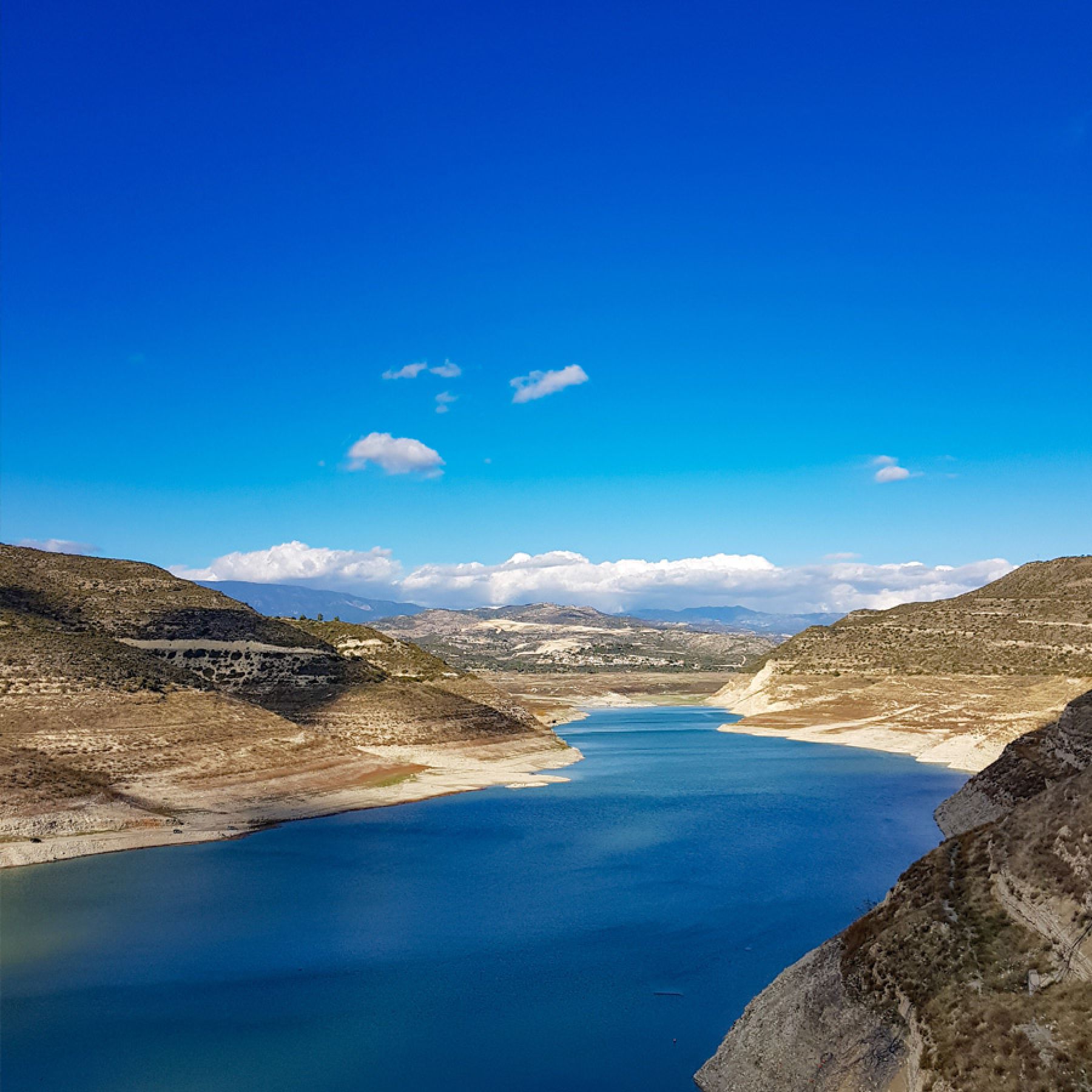
Kourris Dam
Kourris Dam
The island’s largest dam, Kouris, on the north west of the southern coastal town of Limassol, has a storage capacity of 115 million cubic metres.
The Cyprus Water Development Department has proceeded to control the outflow of significant amounts of water from the dam, to help enrich the aquifer of Akrotiri, on the southern coast.
The dam, whose construction finished in 1988 in the Limassol area, overflowed for the first time in 2004.
All Accommodation
The best Restaurants in the Village of Lofou
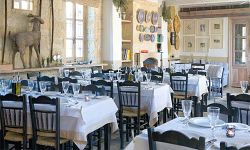
Agrino Restaurant
The AGRINO restaurant serves traditional cypriot cuisine full of originality and prepared with wholesome fresh produce. The dining room has a warm atmosphere with cyprus stone flagged floor, stone walls and open fireplace. It opens into the courtyard where breakfast, lunch, drinks and candelit dinners are served in the summer or whenever the temperature allows. The courtyard barbeque kitchen with wood burning oven adds a strong local flavour to the cuisine. Breakfast features locally baked bread, greek yoghurt, homemade preserves along with seasonal fresh fruits. Light homemade platters and salads are available for lunch. Dinner is a meze of carefully prepared wholesome dishes. After dinner drinks can be served on the TERRACE overlooking the village and surrounding countryside. Wines can be selected from our large collection of mediterranean wines stored in the underground cellar, the STERNA.
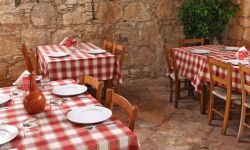
Agrovino Taverna, Courtyard and Bar
Costas and his family have been running the taverna for many years and with a host of experience in Cypriot cuisine and hospitality, they have become well known right across the region.The Restaurant offers a wide ranging traditional menu with specialities such as homemade Moussaka and Afelia being all-time favourites with many regular customers.The full Greek meze which is the order of the day on Sundays will leave you feeling as if you won’t need to eat again until the following Sunday!
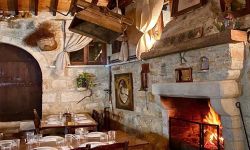
Kamares Taverna
The Tavern “Kamares” is located in the picturesque village of Lofou and its a traditional place, built of stone and decorated with antiques. Enjoy quality food with 18 varieties of appetizers, salads, main dishes with 13 exclusive, unique, our own recipes, and a wide variety of pastries.
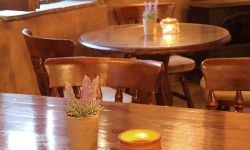
Coffee Shop and Wine Cellar
The Coffee Shop and Roof Terrace provide an additional venue with a breathtaking view across Cyprus towards the Salt Lake at Akrotiri. While away the afternoon with a coffee, an ice cream or delicious dessert.The Wine Cellar offers a vast selection of local produce with an opportunity to sample many of the tastes of traditional Cyprus.
Don’t forget to taste our refreshing juices of our own production (e.g. orange, pomegranate, etc).
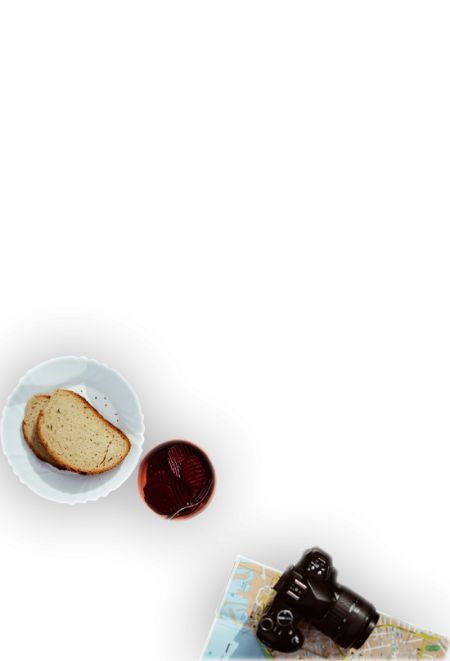
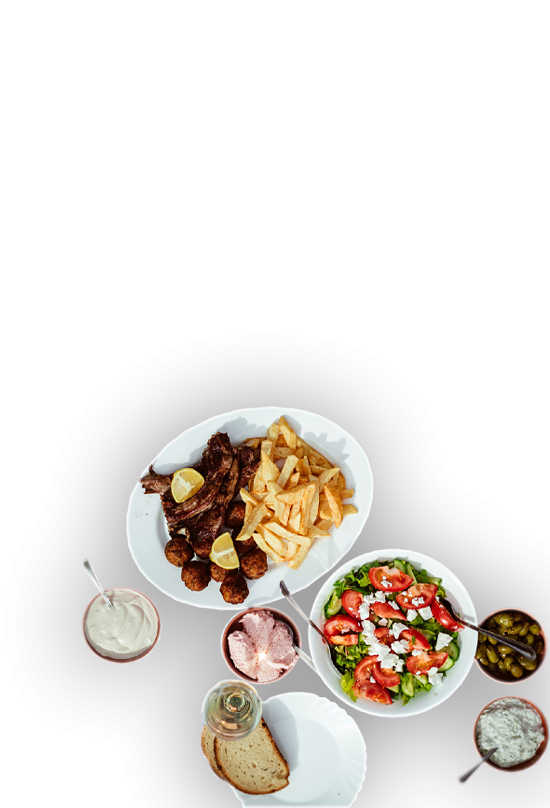
 Cities/District
Cities/District Monasteries
Monasteries Unesco Churches
Unesco Churches Food & Drink
Food & Drink  Limassol to Nicosia
Limassol to Nicosia Famagusta to Machairas
Famagusta to Machairas Kourion to West Akamas
Kourion to West Akamas Hotels
Hotels Villas
Villas Agrotourism Accommodations
Agrotourism Accommodations Flights
Flights Rent a Car
Rent a Car